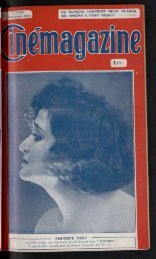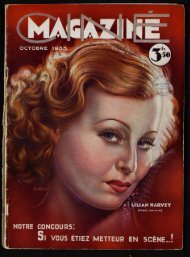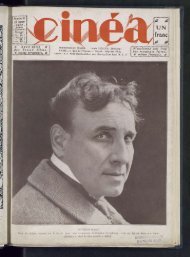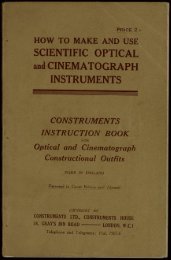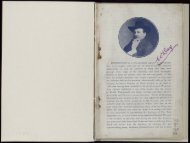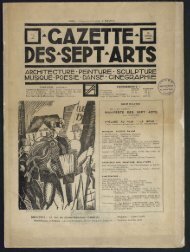Untitled
Untitled
Untitled
You also want an ePaper? Increase the reach of your titles
YUMPU automatically turns print PDFs into web optimized ePapers that Google loves.
26 IgODERN MAGIC LANTERNS. COMPRESSED GASES. 27<br />
The amount of knocking about which a charged cylinder<br />
can actually stand, if properly made and annealed, is surprising.<br />
Mr. Murray, the engineer to the Brin Oxygen<br />
Co., in his book on compressed gases, narrates how they<br />
have for experimental purposes been dropped vertically from<br />
a height of 35 feet two or three times in succession, crushed<br />
with a 15-ton blow, and finally bent into a bow form ;<br />
on testing them after this treatment they were found to<br />
contain the full quantity of gas. To secure the degree of<br />
safety indicated by this, the cylinders must not only be well<br />
made of suitable steel, but inasmuch as the physical structure<br />
of the steel becomes gradually altered, they must from<br />
time to time be annealed, a process which restores them to<br />
their original condition as far as strength is concerned. It<br />
is therefore advisable, if baying a cylinder, or bottle as it is<br />
sometimes called, to get a new one from a reliable maker,<br />
and one which has been properly tested. The gas compressing<br />
firms themselves let out cylinders on hire, which<br />
can be relied upon, for those who do not wish to bay one<br />
outright.<br />
Inasmuch as the gas in these cylinders is at a very high<br />
pressure, and the pressure required in the lantern is hardly<br />
a hundredth part of this, means have to be taken to reduce<br />
the pressure of the gas in its passage from the bottle to the<br />
jet. The best method of doing this is by employing what<br />
is known as a regulator, a little instrument which will<br />
deliver the gas uniformly at any pressure desired until the<br />
cylinder is empty, although the pressure in the bottle is<br />
constantly decreasing as the gas is consumed. There are<br />
several forms of regulator on the market ; the first to be<br />
introduced, and one which is still extremely popular, is that<br />
known as Beard's, after its inventor. Brier's and Clarkson's<br />
are also well-known patterns. Broadly speaking, the<br />
principle upon which these regulators are made is the same,<br />
and can be understood best on reference to the Figs. 19<br />
and 20, which illustrate the construction of the Beard<br />
regulator. The cylinder has the regulator screwed into its<br />
orifice, and the outlet P being closed, the gas is turned on<br />
and passes into the bellows c, expanding them and tightening<br />
up the spring s. As the top, D, of the bellows rises<br />
with the pressure of the gas it gradually closes the valve f,<br />
by mean of the system of levers seen at n, and so cuts off the<br />
supply of gas. As the gas is used at the jet, the spring<br />
forces D down again until the valve reopens and allows the<br />
bellows once more to receive a supply from the cylinder, and<br />
so on. The pressure at which the regulator delivers the<br />
gas, as generally supplied, is about that of 12 inches of<br />
water, but it can be varied by varying the strength of the<br />
springs. Where both oxygen and hydrogen are used in<br />
Fig. 19. BEARD'S REGULATOR Fig. 20. BEARD'S REGULATOR,<br />
EXTERIOR. INTERIOR.<br />
cylinders, separate regulators should be employed for each,<br />
the hydrogen regulator never being attached to the oxygenbottle,<br />
and vice versa. When using the regulator, the gas<br />
can be adjusted by the jet taps, and if required they can be<br />
turned completely off, which, if no regulator were employed,<br />
would result in bursting or blowing off the tube.<br />
In addition to a regulator, those who use cylinders habitually<br />
will find a pressure gauge very useful, as showing at<br />
a glance the amount of gas the cylinder contains. The



